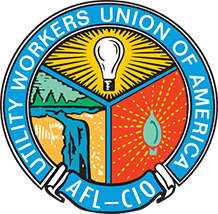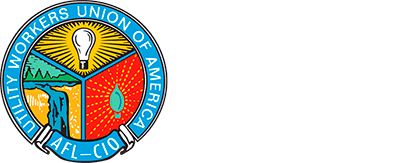When Donald Trump was inaugurated President, one of the most important items on his agenda was nominating a person for the open seat on the United States Supreme Court. Although the Supreme Court often receives media attention for hot button issues, such as abortion rights and death penalty cases, less attention is focused on the Court’s rulings that directly impact unions and worker rights.
In February, President Trump nominated Neil Gorsuch, a 49-year-old judge on the Tenth Circuit Court of Appeals, to the open Supreme Court seat.
Gorsuch’s record
On April 7, 2017, the Republican controlled Senate chose the “nuclear option” and ended the filibuster rule for United States Supreme Court nominees. As a result, Judge Gorsuch was confirmed to the Supreme Court in a vote of 55-45. On April 10, Gorsuch was sworn in as an associate justice of the Supreme Court. This is a position he is likely to hold for decades.
One of President Trump’s most consistent promises during the presidential election was that he supported workers. So how does Justice Gorsuch’s record square with President Trump’s pro-worker campaign promises?
During the Senate hearing on Gorsuch’s nomination, he said very little about his views on worker rights. However, while Justice Gorsuch was a judge on the Tenth Circuit Court of Appeals, he often sided with corporations in litigation by workers.
Most famously, then Judge Gorsuch authored the dissent in the case of Trans Am Trucking v. Administrative Review Board, United States Department of Labor. This case has been referred to in the media as the “frozen trucker” case. In that case, truck driver Alphonse Maddin unhitched his trailer during a snowstorm in order to drive to safety because he was suffering the effects of hypothermia and feared for his life. Although the trailer was only left for a short time and no damage was done to the trailer, he was fired by his employer. Maddin filed a claim asserting that his discharge was unlawful because he unhitched the trailer for safety reasons. Maddin’s case moved its way through the administrative and then the judicial process and every judge sided with him, except for one — Justice Gorsuch, who supported Maddin’s discharge, even though he faced grave danger if he had not sought shelter from the storm.
Worker rights threatened
Justice Gorsuch’s dissent in the “frozen trucker” case is not a good sign for how he will view union rights and worker rights on the Supreme Court.
The AFL-CIO, which closely analyzed the rulings and writings of Justice Gorsuch, vigorously opposed his confirmation to the Supreme Court. Throughout his career on the court of appeals, Justice Gorsuch expressed skepticism about pro-worker NLRB rulings.
When Justice Antonin Scalia died in January 2016, a seat opened on the Supreme Court. Justice Scalia was vehemently anti-union and anti-worker throughout his tenure on the Court. At the time of Justice Scalia’s death, it was likely that the Supreme Court was going to rule 5-4 that all public sector union employees in the United States could become free riders and not pay for the benefits they receive from their union. The UWUA has a number of public sector locals that would be directly affected by such a ruling. Up first, public sector
That case, Friedrichs v. California Teachers Association, was decided without Justice Scalia’s vote and ended up a 4-4 tie, with the conservative justices (Alito, Thomas, Kennedy and Roberts) voting to allow free riders and the liberal justices (Breyer, Ginsburg, Sotomayor and Kagan) voting in support of requiring all union-represented employees to pay their fair share. As a result, the lower court ruling stood and all employees that benefit from a union contract must pay their fair share in non-right-to-work states. Now that the Court has nine justices, the issue of whether all public employees can shirk their responsibility to pay for the services their union provides is likely to come before the Court again, with Justice Gorsuch likely the deciding vote.
Another crucial test for President Trump related to unions and workers will be his appointments to the National Labor Relations Board. The NLRB is the agency that enforces the law that protects the right to organize a union, negotiate contracts and prohibits retaliation against employees who engage in union activity.
Elections count
Currently, there are two openings on the five member Board. The makeup of the current Board is two Democrats and one Republican. President Trump will likely appoint two members to the NLRB soon. Two pro-management appointees could change the outcome of many NLRB rulings which protects workers and unions.
The rulings of the Labor Board directly affect UWUA members every day. It is important that UWUA members know that decisions by the Supreme Court and the NLRB impact their workplace and take that into account when supporting candidates for office.
For example, the NLRB under President Obama instituted new election rules which made elections faster and fairer for the workers seeking to be organized. This allows workers to decide whether to be union without outside interference. UWUA locals have successfully used the new election rules to organize new groups of workers and bring the benefits of a union contract to more utility workers. The election rules have come under attack by business groups and may be rolled back if President Trump appoints anti-union officials to the NLRB.

